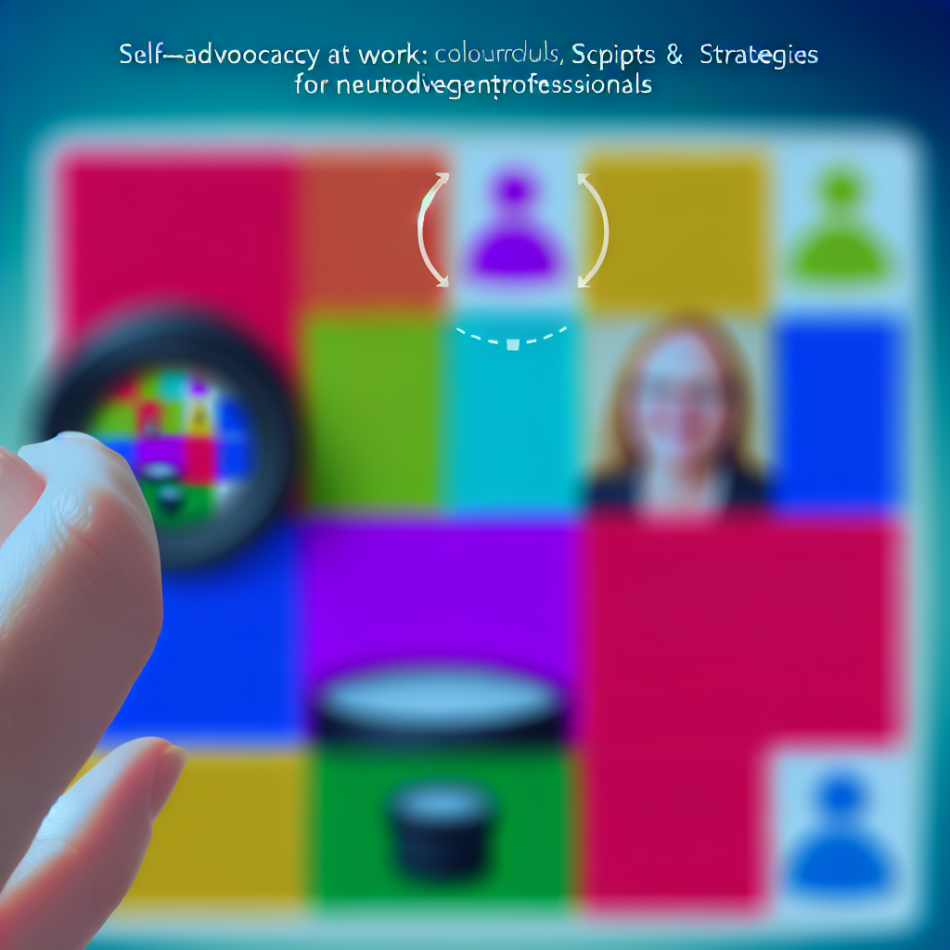Navigating Self-Advocacy at Work: Scripts and Strategies for Neurodivergent Professionals
Self-advocacy is a vital skill for neurodivergent (ND) individuals in the workplace, yet it often comes with unique challenges. From managing energy levels to articulating needs effectively, the process can feel exhausting and overwhelming. This article explores practical scripts, actionable strategies, and insights to help ND professionals communicate their needs confidently while balancing the emotional labour of self-advocacy. Let’s dive into tools that foster empowerment and workplace inclusivity.
Understanding Self-Advocacy as a Neurodivergent Professional
For many ND individuals, self-advocacy isn’t just about asking for adjustments—it’s about navigating a world designed for neurotypical norms. Sensory sensitivities, communication differences, or executive functioning challenges often require tailored support. However, explaining these needs can lead to misunderstandings or stigma. Recognising self-advocacy as a skill—one that requires practice and self-awareness—is the first step in reframing it as a tool for empowerment rather than a burden.
The Hidden Costs of Self-Advocacy
Advocating for oneself often demands significant emotional and mental energy. ND individuals may spend hours rehearsing conversations, anticipating pushback, or recovering from the stress of confrontation. This “advocacy fatigue” can lead to burnout, especially in unsupportive environments. Factors like fear of being labelled “difficult,” past experiences of dismissal, or lack of employer awareness compound these challenges. Acknowledging these costs is crucial to developing sustainable strategies.
Practical Scripts for Common Workplace Scenarios
Preparing scripts can reduce anxiety and ensure clarity. Here are examples tailored to ND needs:
- Requesting Sensory Adjustments: “I work more efficiently in a quieter environment. Could we explore options like noise-cancelling headphones or a dedicated workspace?”
- Clarifying Communication Preferences: “I process information better with written instructions. Would you mind summarising key tasks via email after meetings?”
- Managing Workload: “I want to deliver quality work, but overlapping deadlines are challenging. Can we prioritise tasks or adjust timelines?”
These scripts balance professionalism with specificity, making it easier for employers to act.
Strategies to Reduce the Emotional Load
Beyond scripts, ND professionals can employ tactics to make self-advocacy less draining:
- Use Written Communication: Emails or messages allow time to articulate needs without the pressure of real-time conversation.
- Leverage Formal Support: Partner with HR or occupational health to document adjustments, shifting the responsibility from individual to systemic support.
- Frame Requests as Mutual Benefits: Highlight how adjustments improve productivity (e.g., “Reducing background noise helps me focus, which means faster turnaround times”).
- Practice Incremental Disclosure: Share needs gradually, building trust while assessing the employer’s responsiveness.
Building a Supportive Workplace Culture
While individual strategies matter, organisational change is key. Employers can:
- Offer anonymous feedback channels to surface ND needs without singling individuals out.
- Train managers on neurodiversity, emphasising flexibility over rigid policies.
- Normalise workplace adjustments (e.g., flexible hours, sensory-friendly spaces) as universal design, reducing stigma.
When companies proactively address accessibility, ND employees spend less energy justifying their needs.
Sustaining Energy for Long-Term Advocacy
Self-advocacy isn’t a one-time task—it’s an ongoing process. To prevent burnout:
- Schedule Recovery Time: Block post-meeting downtime to recharge after advocacy efforts.
- Celebrate Small Wins: Recognise progress, whether a successful request or increased self-confidence.
- Connect with ND Communities: Peer support provides validation and shared strategies, reducing isolation.
Remember, setting boundaries (e.g., declining non-essential tasks) preserves energy for critical advocacy moments.
Conclusion: Empowerment Through Sustainable Advocacy
Self-advocacy for ND professionals is a nuanced skill that balances clear communication with self-preservation. By preparing scripts, leveraging workplace systems, and prioritising energy management, individuals can advocate effectively without burnout. However, lasting change requires employers to embrace neurodiversity as an asset, not a hurdle. Together, these strategies foster workplaces where ND individuals thrive—not just survive—by transforming exhaustion into empowerment.
